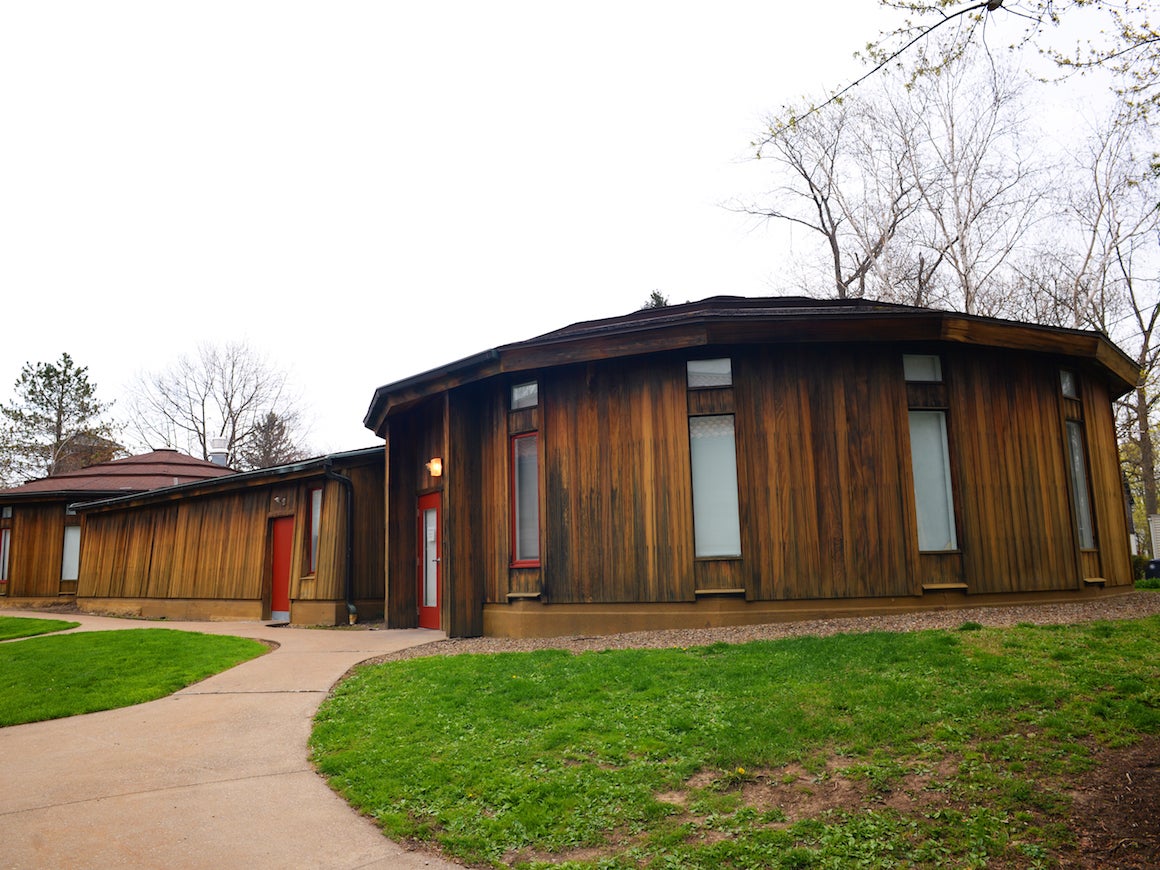Art Studios

Originally built in the 1960’s from prefabricated geodesic kits, the North and South Domes are now home to the art department’s drawing program.
Photo credit: Jeong Hyun Hwang
Art department faculty, students, and some staff use these spaces for instruction, project development, collaboration, individual study, and to exhibit their works.
For example, the North and South Domes serve the art department’s drawing program. Studios are housed within the main art building as well as in spaces in buildings in downtown Oberlin. Among the locations:
64 E. Lorain St. Faculty Studios
Originally built as an automobile dealership, 164 E. Lorain St. was purchased by Oberlin College in 1988 and was converted to its current configuration to provide art faculty with research studios.
55 E. Lorain St. Faculty Studio
In 1968, to alleviate crowding in the 1937 Clarence Ward addition, the Art Department was given possession of the “yellow house” on the corner of Lorain St. and Willard Court. The basement and first floor were used for sculpture classes while the second floor was used for semi private studios. Now clad in Blue siding, this is the home of faculty studios.
Orchard Kindergarten Faculty Studios
Originally built in an apple orchard in 1909 by Maynard Metcalf as a zoology and botany laboratory, this building was purchased by the Oberlin Kindergarten-primary Training School in 1926. It was sold to Oberlin College in 1932 then leased to the Oberlin Public Schools as a kindergarten until closing in1980. It now services art faculty as research studios.
Julia Severance Faculty Studio
James R. Severance was the treasurer of Oberlin College and commissioned this house to be built in 1896. After his death in 1916, his wife and daughter remained living in the house until 1942. Julia was an artist and had the “all glass” addition built onto the barn located at the rear of the property as a studio and is credited with designing the new college seal in 1911. Her all glass addition continues as a faculty art studio.
Hobbs Building Senior Studios
Prior to the Art Department occupying this Historic downtown location in 2008, the second floor of the Hobbs building was a tattoo parlor. It now houses private student studios servicing the department’s capstone Senior Studio program and advanced individual projects.